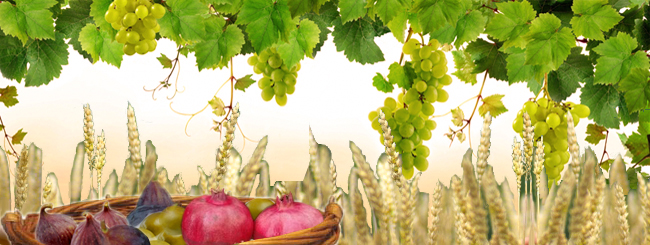What is Tu b’Shevat?
Although not specifically established as a holiday in the Bible, the 15th of Shevat on the Jewish calendar (which usually occurs in either late January or February) is the day that marks the beginning of a “new year” for trees. This is the season in which the earliest-blooming trees in the Land of Israel emerge from their winter sleep and begin a new fruit-bearing cycle.
The date is marked by eating fruit, particularly from the kinds that are singled out by the Torah in its praise of the bounty of the Holy Land: grapes, figs, pomegranates, olives and dates. On this day we remember that “man is a tree of the field” (Deuteronomy 20:19), and reflect on the lessons we can derive from our botanical analogue.

What Do People Do?
Jewish people mark this day by eating a symbolic meal of fruit and nuts or planting trees. Many make a special effort to eat a meal consisting of dried fruit and nuts accompanied by red wine or grape juice. They often share this meal with family members and close friends. Some people pickle or candy the etrog (a citrus fruit) used at the ceremonies during Sukkot and eat it on Tu b’Shevat.
Many Jewish people, particularly in Israel and on kibbutzim, plant trees or take part in activities to further environmental awareness. In this respect, Tu b’Shevat has a lot in common with Arbor Day celebrations around the world.
Public Life
Tu b’Shevat is not a public holiday in countries such as Israel, Australia, Canada, the United Kingdom or the United States. However, some Jewish organizations may be closed or offer a limited service to allow for festivities to occur on this day.
Background
According to some readings of Jewish law, fruit that ripens in the first three years that a tree gives fruit is considered orlah. This means that it is not kosher and thus not acceptable for Jewish people to eat. Tu b’Shevat marks the “new year” or “birthday” of trees. Fruit that ripens in the third year on or after the 15th day of the month of Shevat is kosher. Traditionally, the fruit that ripened in the fourth year was taken to the temple as a tithe. This is now paid symbolically using coins.
Some Jewish people began to hold a symbolic seder (meal) on Tu b’Shevat after 1600 CE. This consisted of different types of fruit and nuts, each of which had a specific spiritual meaning. This custom is still alive for some Jewish groups.
Tu b’Shevat is one of four Jewish new years.
- One of the most well known is Rosh Hashana – the “Head of the Year” – on the first day of the month of Tishrei.
- The New Year for Jewish kings and festivals is on the first day of the month of Nissan.
- The New Year for animal tithes is on the first day of the month of Elul.
- The New Year of the Trees is always on the 15th of Shevat.
Symbols
Important symbols of Tu b’Shevat include different types of dried fruit arranged on a platter, flowering almond trees and the “seven species”. These are:
- Barley
- Dates
- Figs
- Grapes
- Olives
- Pomegranates
- Wheat
The seven species are associated with the Land of Israel in the Torah so they have an important place in Jewish culture.




